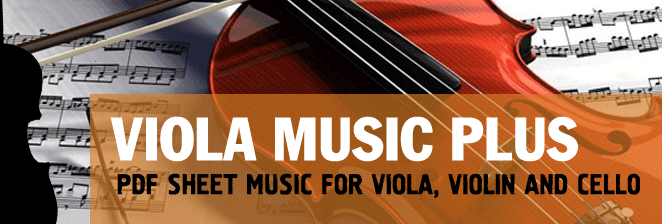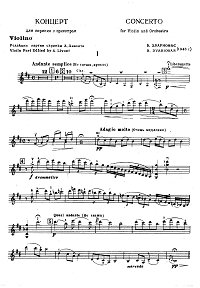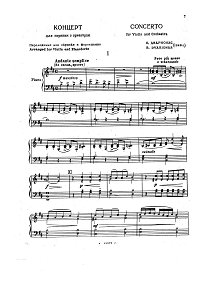|
|
 |
|
| |
| |
Dvarionas - Violin concerto (1948)
Dvarionas - Violin concerto (1948). You can download the PDF sheet music Dvarionas - Violin concerto (1948) on this page. Dvarionas devotes much time to the transcription of Lithuanian folk songs, whose intonational and structural peculiarities are an integral part of the composer's musical philosophy. This close link with the original musical creative work of the Lithuanian people is felt in the Concerto for Violin and Orchestra B Minor (1948), which attracts the listener with its moving lyrical tunes, drawn from the vital spring of folk song. In this concerto the composer develops pensive melody-tales of narrative character, simple instrumental tunes, full of mirth and jest, playful, dancelike melodies, with their keen, syncope rhythms and distinctive modal and harmonic colours (pentatonics, variable modes, parallel fifths, etc.) and appropriate structure. The Concerto is full of light, energy, clearness and spiritual simplicity. In the movingly lyrical, vigorously willful, playful and gracious images of the Concerto there is love for the native scene, there is richness in perception -of reality; the Concerto poetically portrays these life-like scenes.
To download PDF, click the "Download PDF" button below the appropriate sheet music image.
To view the first page of Dvarionas - Violin concerto (1948) click the music sheet image. |
| PDF format sheet music |
|
|
|
Instrument part: 19 pages. 28787 K
|
Piano part: 58 pages. 92446 K
|
 |
 |
|
|
| Download PDF (14.99
€) |
Download PDF (14.99
€) |
|
There are some intonations common to Lithuanian and Russian and Ukrainian music, and to music of other Slavic peoples; "eastern" intonations are also found. The characteristic features of the themes and the means of developing them (particularly the predominance of variation) are also linked with folk practice. The folk source is felt also in free, improvisatory idiom and rhapsodic features in the structure of some parts of the cycle and in coloristic traits of the instruments, which often imitate folk instruments.
In the first movement of the Concerto (in sonata allegro form) a broadly developed introduction of improvisatory character plays the important role. The main themes not only of the first movement but of the whole Concerto grow out of this introduction. Links between many episodes of the different movements of the cycle unite the thematical material of the Concerto.
The prevailing character of the first movement is a lively, vivid, temperamental one. This is supported not only by the willful mood of the principal subject, based on dance idiom, but also by the emotionally ascending, broadly singing transition section. A completely different mood prevails in the contrasting subordinate subject. The melody of this subject (the composer's variant of an Aukstai folk song "On an Autumn Morn", in the characteristic meter) is a kind of restrained concentrated lyrical "narration".
The lyrical "core" of the work is the penetrating second movement, written with love and warmth and orchestrated with excellent taste. The aroma of freshness and spontaneity originates in the introductory theme (a variation of the folk songs "Alaus, alaus", recorded by the composer), and is maintained by the main theme which grows out of that introduction and which, in itself, is bright and transparently vivid, reminiscent of the naive sound of a reed flute (figure 4). The same captivating traits are found in a - later lyrical" theme which is stylistically close to Soviet lyrical song (fig. 8) and jn a contrasting episode, a genre depiction of a peasant dance with its strikingly modal, rhythmical and instrumental folk color.
The energy filled, temperamental finale is written in rondo-sonata form. The introduction is brilliant, and dynamic; the basic rondo theme is related in character and idiom to the principal subject of the first movement, but is more compact, resilient and willfully directed. The first episode, anticipated by colorful parallel fifths, is a mobile, provocative and at the same time graceful folk dance; the lively pulse of the motion does not slacken even in the next unexpected and contrasting episode of lyrical character. In the latter oriental colors unexpectedly appear. The impetuous coda is dominated by transformed motives from the principal subject of the first movement and by the main theme of the finale, cementing the thematic material and emphasising the optimistic outlook of the entire work.
The Concerto was first performed in 1948 (in Vilnius) with the Honored Artist of the Lithuanian S. S. R., A. Livont as soloist and with the composer conducting. |
|
|
|
|
| |
|
|
| |
|
|
|
|